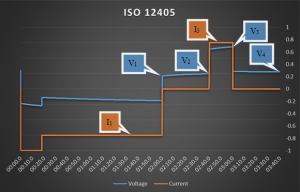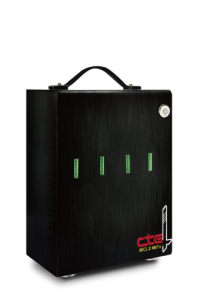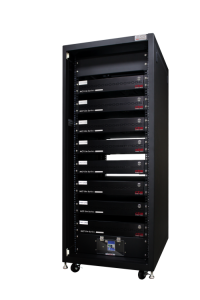Direct current internal resistance (DCIR) of batteries is the r esistance of current flowing through the battery, with the standard unit of measurement called the ohm.The value of DCIR is not fixed, and varies depending on multiple factors, such as battery materials, electrolyte concentration, temperature, and depth of discharge.
The variation of DCIR has a great influence on battery discharge performance, especially for high power batteries. In general, the better the battery, the lower the internal resistance. Therefore, most battery manufacturers identify DCIR as
a key indicator to evaluate battery quality. The method of DCIR measurement is to inject high current into the anodeand cathode of the battery in a short period, and then record the changes of battery voltage and charge/discharge current. To calculate DCIR by Ohm’s Law, voltage variation is divided by current variation.
Among all DCIR measurement standards and methods, we offer the following three most widely used ones on our battery test equipment:
IEC 61960
The test is conducted according to the IEC 61960-2330 standard. First, discharge the battery at 0.2C for 10 seconds and record the V1 and I1 values. Then, discharge at 1C for 1 second and record V2 and I2 values.
●DCIR=(V1-V2)/(I2-I1)

ISO 12405
The test is conducted according to the ISO 12405-2 standard. First, discharge the battery at 1C for 18 seconds, then discharge at 0.75C for another 102 seconds and record the V1 and I1 values. Second, rest the battery for 40 seconds, and record the V2 and I2 values. Third, charge the battery at 0.75C for 20 seconds, and record the V3 and I3 values. Last, rest the battery for 40 seconds, and record the V4 and I4 values.
●DCIR (D)=(V2-V1)/I1 ●DCIR (C)=(V3-V4)/I3
Customized
Discharge the battery with constant current, record voltage and current values in the beginning (V1, I1) and at the end (V2, I2) of the process.
●DCIR=(V1-V2)/I2
In addition to DCIR, Alternating Current Internal Resistance (ACIR, also called Alternating Current Impedance) is another indicator used recently to analyze electrodes. The method is to inject a known frequency of sinusoidal current into the battery (1Khz is widely adopted by industry), and then observe the gain and phase of voltage response. The measurement of ACIR involves frequency domain, which makes it extremely complicated.Whereas, using DCIR for battery quality measurement is much more direct.
The following Chen Tech battery test equipment supports DCIR measurement:
» BT 1000 Series » PBT 2000 Series » GBT 1000 Series » MCL2 Series




